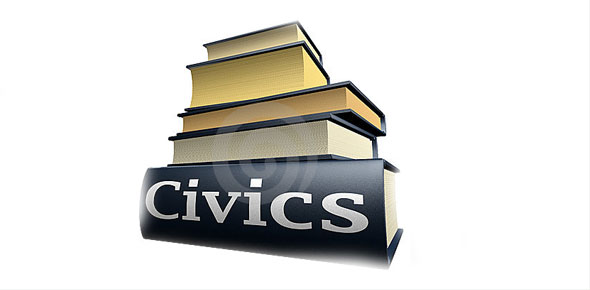Final Civics Quiz

20 question quiz before the EOC
- 1.
What is the major difference between a tight money policy and a loose money policy?
- A.
Loose money keeps the banks from loaning out money
- B.
Tight money policy puts dollars in tighter bundles
- C.
Tight money policy keeps banks from giving out as many loans
- D.
Loose lets only government officials get loans
Correct Answer
C. Tight money policy keeps banks from giving out as many loans -
- 2.
What is the name of the interest rate charged by the FDIC called?
- A.
Interest Rates
- B.
Discount Rates
- C.
Disposable Rates
- D.
Personal Rates
Correct Answer
B. Discount Rates -
- 3.
What is the difference between currency and legal tender?
- A.
There is no difference
- B.
Legal tender is only for our country
- C.
Currency doesn't exist
- D.
Legal tender is what the government recognizes as currency
Correct Answer
D. Legal tender is what the government recognizes as currency -
- 4.
What is needed to find an equilibrium point?
- A.
Federalists and anti-federalists
- B.
Supply and demand curves
- C.
Businesses and households
- D.
Wages and salary
Correct Answer
B. Supply and demand curves -
- 5.
Who sells the factor of production in the circular flow model?
- A.
Households/individuals
- B.
Government
- C.
Businesses
- D.
Anyone
Correct Answer
A. Households/individuals -
- 6.
What do partial owners of corporations have to purchase?
- A.
Stocks
- B.
Insurance
- C.
Limited liability
- D.
The business
Correct Answer
A. Stocks -
- 7.
What countries are involved in NAFTA?
- A.
USA, Mexico, England
- B.
Mexico, Panama, USA
- C.
Canada, USA, France
- D.
USA, Canada, Mexico
Correct Answer
D. USA, Canada, Mexico -
- 8.
When production is broken into smaller portions this is called?
- A.
Specialization
- B.
Checks and balances
- C.
Division of labor
- D.
Assembly lines
Correct Answer
C. Division of labor -
- 9.
What type of economy is controlled by the consumer?
- A.
Consumer Market
- B.
Capitalism
- C.
Marxism
- D.
Command Market
Correct Answer
B. Capitalism -
- 10.
Who controls the factors of production in a command market?
- A.
Consumers
- B.
Government
- C.
Individual business owners
- D.
The USA
Correct Answer
B. Government -
- 11.
According to the law of supply, what would happen to price if the supply were to decrease?
- A.
Increase
- B.
Increase then decrease
- C.
Decrease
- D.
Decrease then increase
Correct Answer
C. Decrease -
- 12.
If there is not enough product to meet demand then it is experiencing a what?
- A.
Surplus
- B.
Shortage
- C.
Summons
- D.
Subpoena
Correct Answer
B. Shortage -
- 13.
What court case decided affirmative action programs were constitutional?
- A.
Swann vs. Charlotte Mecklenberg
- B.
Hazelwood vs. Kuhlmeier
- C.
Regents of UC vs. Bakke
- D.
Tinker vs. Des Moines
Correct Answer
C. Regents of UC vs. Bakke -
- 14.
What amendment is most associated with Mapp vs. Ohio and New Jersey vs. TLO?
- A.
4
- B.
5
- C.
6
- D.
7
Correct Answer
A. 4 -
- 15.
What could not be suspended during peacetime because of Korematsu vs. USA?
- A.
Bill of Attainder
- B.
Supremacy Clause
- C.
Judicial Review
- D.
Writ of Habeas Corpus
Correct Answer
D. Writ of Habeas Corpus -
- 16.
What amendment did Gideon vs. Wainwright expand?
- A.
4
- B.
5
- C.
6
- D.
7
Correct Answer
C. 6 -
- 17.
What did Marbury vs. Madison create?
- A.
Implied Powers
- B.
Elastic Clause
- C.
Judicial Review
- D.
Writ of Habeas Corpus
Correct Answer
C. Judicial Review -
- 18.
Who was left out of the 15th amendment?
- A.
Black men
- B.
Asian men
- C.
Women
- D.
Poor men
Correct Answer
C. Women -
- 19.
What amendment did Miranda vs. Arizona expand?
- A.
2
- B.
4
- C.
5
- D.
6
Correct Answer
C. 5 -
Quiz Review Timeline +
Our quizzes are rigorously reviewed, monitored and continuously updated by our expert board to maintain accuracy, relevance, and timeliness.
-
Current Version
-
Jan 02, 2013Quiz Edited by
ProProfs Editorial Team -
Jun 03, 2009Quiz Created by
Kperkins0520
 Back to top
Back to top


